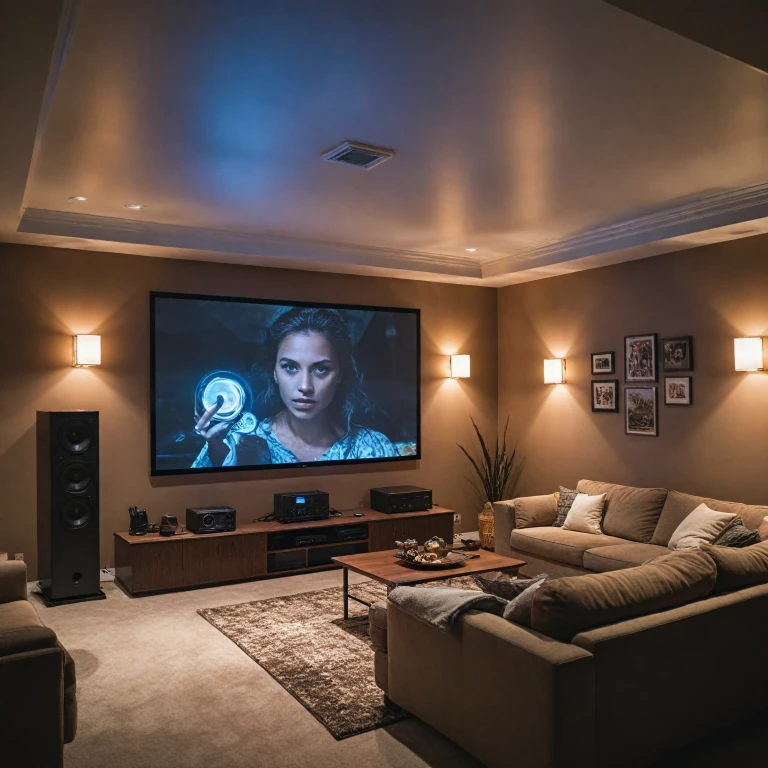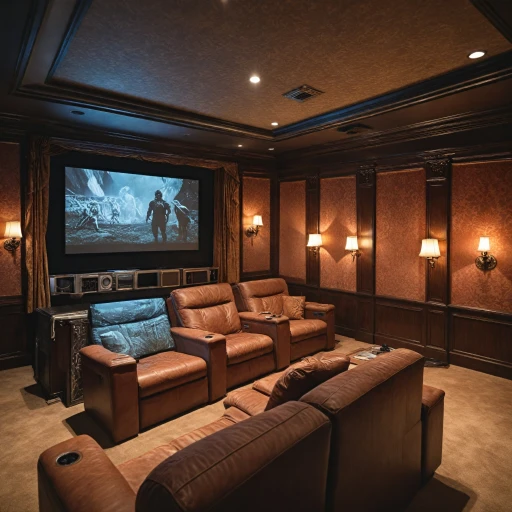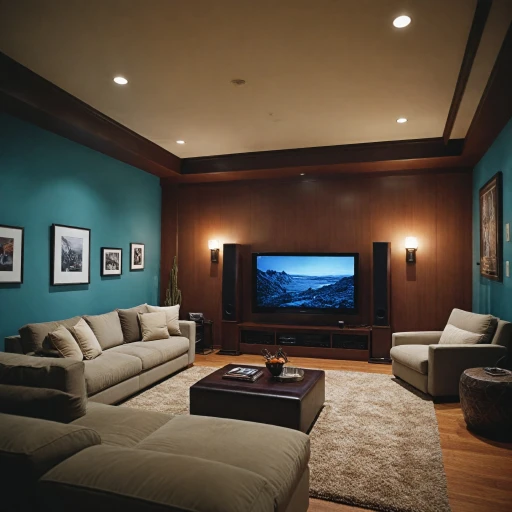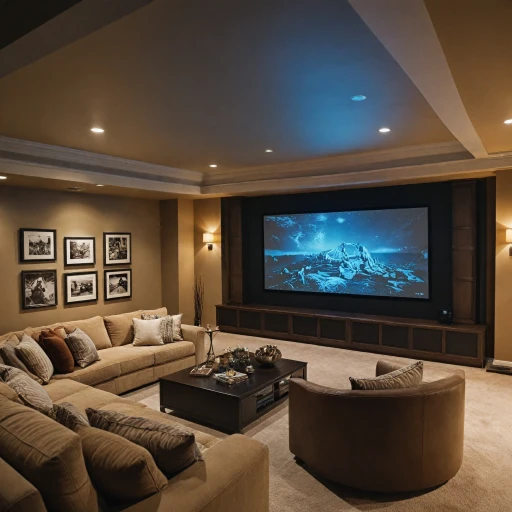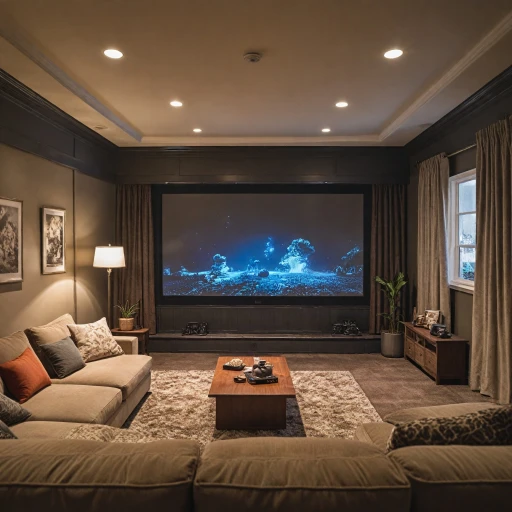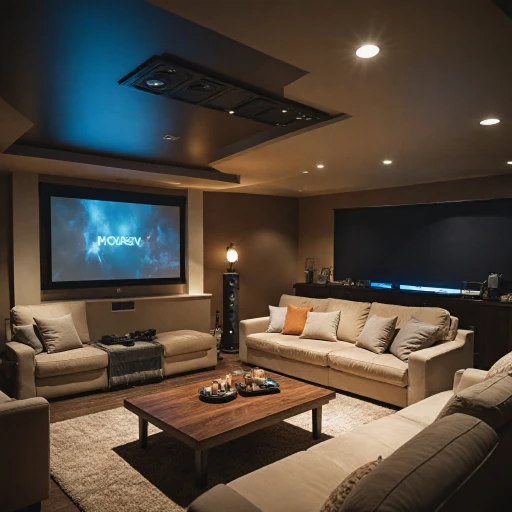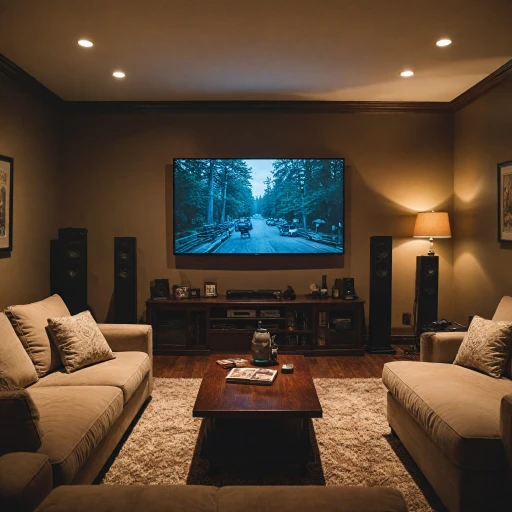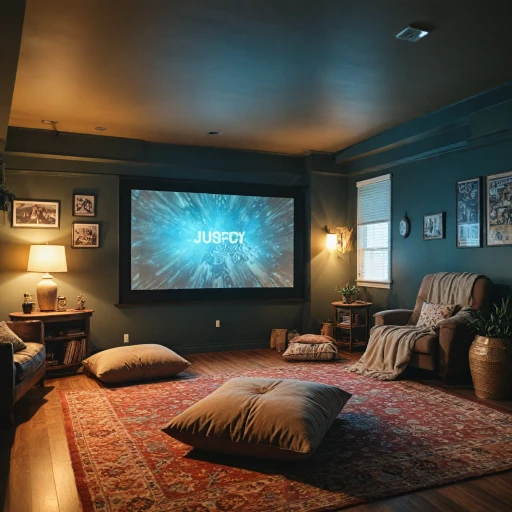
Understanding HDMI Cords
Decoding the World of HDMI Cords
In the realm of home theater projectors, HDMI cords are pivotal to ensure a seamless audio and video experience. As a widely accepted connection standard, HDMI cables effectively transmit high-quality digital video and sound between various devices. These cables come with impressive features, such as support for ultra high definition formats and audio return channels, making them indispensable for modern home theater setups.
When setting up your projector, choosing the right cabling can greatly enhance your viewing experience. HDMI cords come in various lengths, speeds, and specifications. This diversity often leaves buyers questioning which HDMI to choose. One must consider factors like HDMI speed, where a cable labeled as 'high speed' or 'ultra high speed' guarantees robust performance and compatibility with high-definition displays.
The market offers a variety of HDMI products—from basic ones to those with gold plated contacts that promise reduced signal losses and corrosion resistance. For instance, a high-quality HDMI male cord with plated connectors offers advantages like increased durability and enhanced signal quality. When planning your purchase, prioritize cables known for favorable reviews and consistency in performance across varied setups.
Moreover, some HDMI cables feature built-in ethernet capabilities that can carry network data alongside video and audio, providing a multi-functional solution. This feature allows for a more streamlined setup, reducing clutter from extra wires.
Ultimately, selecting the right HDMI cord is not just about connectivity but ensuring a great digital content delivery experience. An informed choice in HDMI will facilitate optimal projector performance, making home viewing a stellar affair.
Why Length Matters: The Case for a 10ft HDMI Cord
The Importance of HDMI Cord Length
When selecting an HDMI cable for your home theater projector, one might overlook how crucial the cable length is to the overall performance and experience. While it’s easy to be tempted by varying lengths available in the market, the significance of opting for a 10ft high-speed HDMI cable cannot be overstated. This particular length often strikes the ideal balance for several reasons.
First and foremost, a 10ft HDMI cable offers just the right amount of flexibility for most home setups, allowing you to easily connect your projector to other devices such as Blu-ray players or gaming consoles without unwanted slack or tension that shorter or longer cables might introduce. Furthermore, sacrificing neither performance nor signal quality, the cable adeptly bridges gaps between different components without compromises.
Another important factor is addressing potential signal degradation which can occur over longer distances. Online reviews frequently highlight how longer cables may occasionally provide subpar transmission, causing disruptions in digital video (or video audio) quality.
Additionally, the right HDMI cable length plays a pivotal role in preventing tripping hazards or excess clutter, which can be as simple as ensuring clean lines and limiting exposure of the cable itself in your living quarters.
Moreover, opting for a standard length HDMI cable provides a level of compatibility and ease of use for most homeowners. The industry's focus on producing high-quality, versatile cables highlights that the 10ft cord remains a well-respected product among those looking for a seamless setup.
In the realm of HDMI cables, taking the time to consider what length best suits your environment isn't just beneficial – it's essential. Whether using a gold-plated connector HDMI or an ultra-high-speed model, the choice of a 10ft cable can result in a video connection that effectively enhances your viewing experience while ensuring ease of installation.
Compatibility with Home Theater Projectors
Interfacing Your Projector with HDMI Cords
When it comes to setting up your home theater system, ensuring seamless compatibility between your HDMI cables and your home theater projector is essential. This compatibility largely hinges on the type of HDMI connection your projector supports. Most modern projectors come equipped with HDMI input ports, enabling them to work well with enhanced viewing experiences.
HDMI cables are specially designed to transmit both high-quality digital video and audio signals with minimal interference, ensuring a true-to-life reproduction of your chosen content. This feature makes them indispensable for anyone looking to achieve a pristine viewing experience right in their living room.
Projectors typically accommodate a range of HDMI standards, including HDMI 1.4, which supports video resolutions up to 1080p, and HDMI 2.0, which offers 4K video support at 60 frames per second. The latter can significantly enhance your viewing experience if your projector supports this kind of input, allowing for stunning clarity and fluid motion.
While selecting an HDMI cable, consider those with gold plated connectors for better conductivity, which further assures the delivery of superior video and audio quality without the risk of signal degradation over distance. This is especially important for higher-resolution content, where every bit of quality counts.
HDMI cables often come with additional features such as Ethernet capability, which allows a connected device to interface with a network-ready product without a separate cable. This functionality can streamline the setup and reduce cable clutter in your home theater room.
Furthermore, look for HDMI cables that feature audio return channels, which can simplify your audio setup by allowing your projector to send audio upstream to an audio system, especially when using devices such as ray players that deliver both stellar video and audio performance.
In conclusion, the right HDMI cable is not merely about achieving a connection; it is about enhancing your entire viewing experience with your home theater projector. This ensures that every moment you spend watching your favorite content is as immersive and enjoyable as it can be.
Quality and Performance Considerations
Key Factors for Optimal Quality and Performance
When setting up your home theater projector, the choice of HDMI cable is crucial to achieving superior quality and performance. High-quality HDMI cables, such as those with gold plated connectors, are designed to efficiently transmit digital video and audio signals. This capability ensures that both picture and sound are delivered without degradation, providing a top-notch cinematic experience.
It's essential to select high speed HDMI cables to support the robust bandwidth required for transferring ultra high-definition content. These cables can handle higher video resolutions and refresh rates, making them a must-have for modern home entertainment systems featuring 4K and beyond.
Another critical aspect is the support for HDMI Ethernet channel, which allows for the convenient flow of internet-capable services without needing additional Ethernet cables. This feature simplifies your setup and reduces cable clutter, enhancing your viewing environment.
Don't forget to check whether the HDMI cable you choose supports the audio return channel. This function allows you to send audio from your TV back to your AV receiver or soundbar, streamlining audio connections for surround sound systems and Blu-ray players.
For those who frequently switch between different devices, cables with HDMI male connectors offer a reliable and secure connection. Products that have received great reviews in the United States often come in a classic black color, matching most home theater setups while easily blending in the background.
To fully enjoy your home theater experience, look for HDMI cables that are known for their reliability in transmitting digital video and audio signals. These cables ensure maximum quality and seamless performance, making them a valuable addition to any high-end setup.
Installation Tips for a Seamless Setup
Setting Up Your HDMI Cable for Optimal Performance
When installing your HDMI cable, ensuring a seamless setup is crucial for maintaining high-quality video and audio performance. Here are some tips to help you achieve the best results:
- Choose the Right Length: As discussed earlier, selecting the appropriate length, such as a 10ft HDMI cable, can prevent unnecessary strain and signal loss. This length is often ideal for most home theater setups, providing flexibility without compromising quality.
- Ensure Proper Connections: Make sure the HDMI male connector is securely plugged into both your projector and source device. Loose connections can lead to signal interruptions and degrade your viewing experience.
- Consider Cable Quality: Opt for high-speed HDMI cables with gold-plated connectors to support ultra-high-definition content and ensure a stable connection. These cables are designed to handle high bandwidth, providing a smooth digital video and audio experience.
- Organize Your Cables: Use cable management solutions to keep your setup tidy. This not only enhances the aesthetic appeal but also prevents damage to the cables. Avoid bending the cables sharply, as this can affect their performance.
- Test Your Setup: After installation, test your setup by playing high-quality content. Check for any issues with video or audio output. If problems arise, refer to troubleshooting tips to address common HDMI cable issues.
By following these installation tips, you can ensure that your HDMI cables deliver the high-quality performance needed for an immersive home theater experience.
Troubleshooting Common HDMI Cord Issues
Resolving HDMI Connection Hiccups
Experiencing issues with your HDMI setup can be frustrating, especially when you’re eager to enjoy a high-definition movie night. Here are some common troubleshooting tips to ensure your video and audio output is seamless.- Check the Cable Connections: Ensure that your HDMI male connectors are securely plugged into both the displayport HDMI and your home theater projector. Loose connections can cause video or audio disruptions.
- Inspect for Physical Damage: Look for any visible wear on the cable. High quality HDMI cables, especially those with gold plated connectors, tend to withstand wear and tear better. If there's apparent damage, consider replacing the cable.
- Test with Another HDMI Source: Sometimes the issue may not be with the cable but with the HDMI port. Try a different source, like ray players or another HDMI output, to identify the faulty area.
- Adjust the Display Settings: Ensure that the display settings on your projector are compatible with the HDMI product specification. This includes confirming the support of high-speed HDMI capabilities such as 4K or refresh rates, especially if you're utilizing ultra high performance video content.
- Try a Different Port: Some projectors offer multiple HDMI ports, each supporting different functions like audio return channel or cable ethernet. Switching ports may resolve any malfunctions due to specific port issues.
- Review the Specifications: Check if the cable can handle the speed and bandwidth of your video audio setup. A high-speed HDMI, capable of supporting digital video and having stellar reviews, ensures a better transmission of high-definition content.
- Factory Reset: If all else fails, a factory reset on the projector might help recalibrate the settings for better HDMI compatibility.
